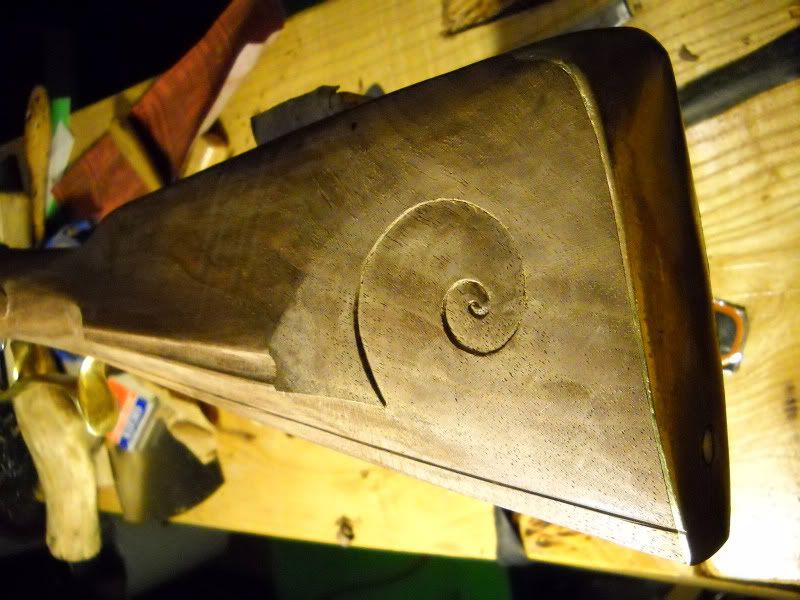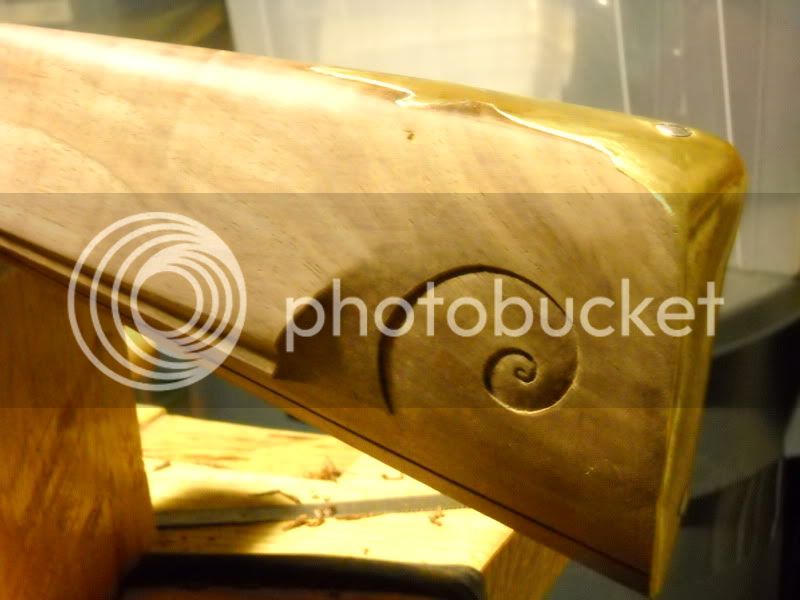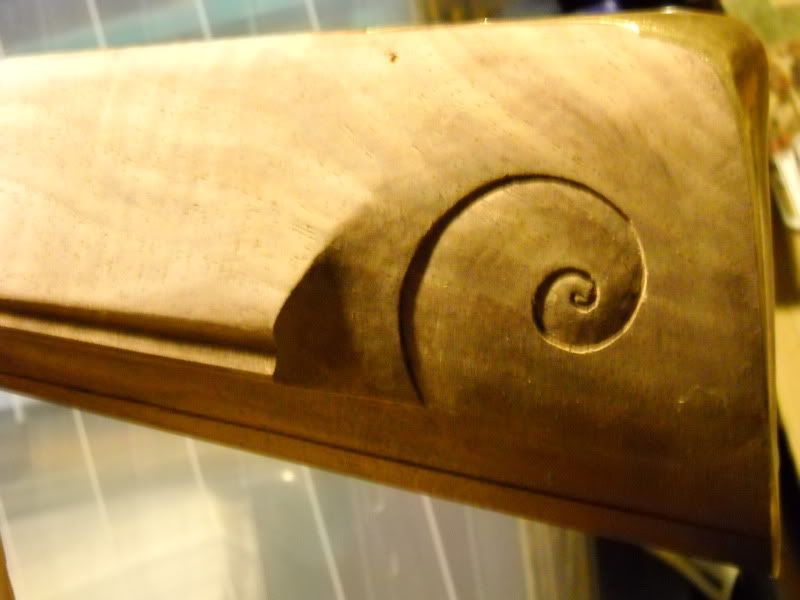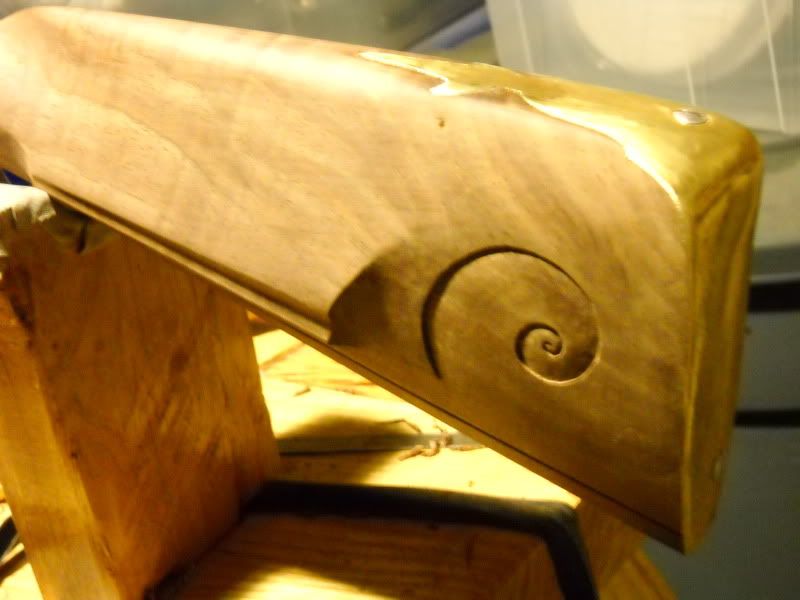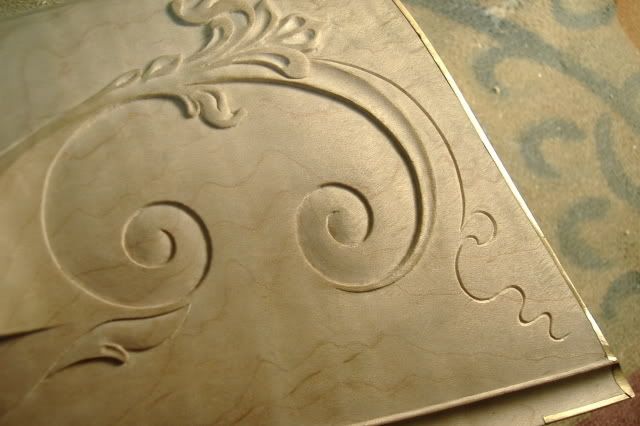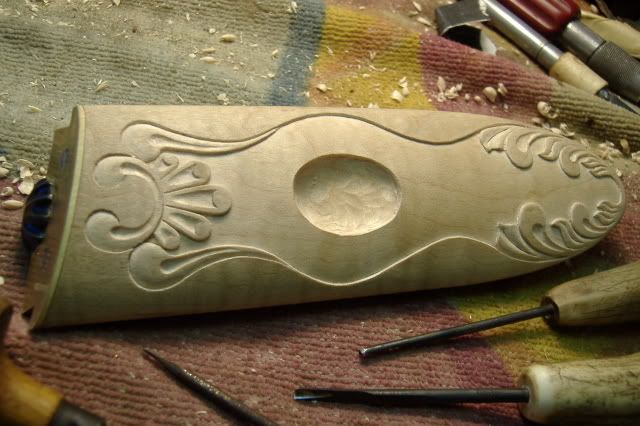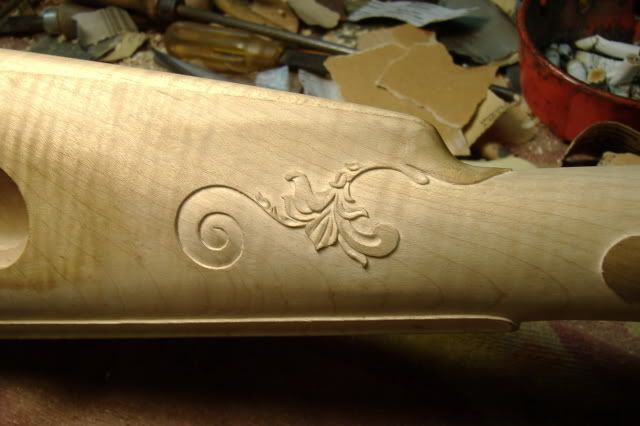mikemeteor
45 Cal.
- Joined
- Nov 16, 2008
- Messages
- 660
- Reaction score
- 3
Question based on what I read in another thread:
I was very interested in that advice from Stophel, about avoiding sandpaper, and gotta admit I was little surprised and intrigued by it.
With a grand total of one build under my belt, I'm interested in improving my carving skills.
I was working under the impression that sandpaper and/or sanding sticks were common practice in relief carving.
For flattening backgrounds and lightly easing 90-degree relief corners.
Maybe lightly easing those edges is exactly what i DON'T want to do :shocked2: !
So, in order to help us newbies better understand the approach to relief carving, I was kinda wondering what the general forum of veteran builders have to say about sandpaper, or, alternatively, beginning and ending all your carvings with only edge tools ?
In asking, I realize there's probably lots of ways to skin that cat.
Stophel said:Keep your tools sharp (do as I say, not as I do), and keep your carving clean and crisp, and even simple carving can look very good compared to complex carving done poorly with rounded or fuzzy edges. Avoid sandpaper around carving at all costs. It is tempting to use tiny bits of the stuff to flatten off the background in the nooks and crannies, but it invariably will end up rounding over the carving, making it look crummy.
I was very interested in that advice from Stophel, about avoiding sandpaper, and gotta admit I was little surprised and intrigued by it.
With a grand total of one build under my belt, I'm interested in improving my carving skills.
I was working under the impression that sandpaper and/or sanding sticks were common practice in relief carving.
For flattening backgrounds and lightly easing 90-degree relief corners.
Maybe lightly easing those edges is exactly what i DON'T want to do :shocked2: !
So, in order to help us newbies better understand the approach to relief carving, I was kinda wondering what the general forum of veteran builders have to say about sandpaper, or, alternatively, beginning and ending all your carvings with only edge tools ?
In asking, I realize there's probably lots of ways to skin that cat.






